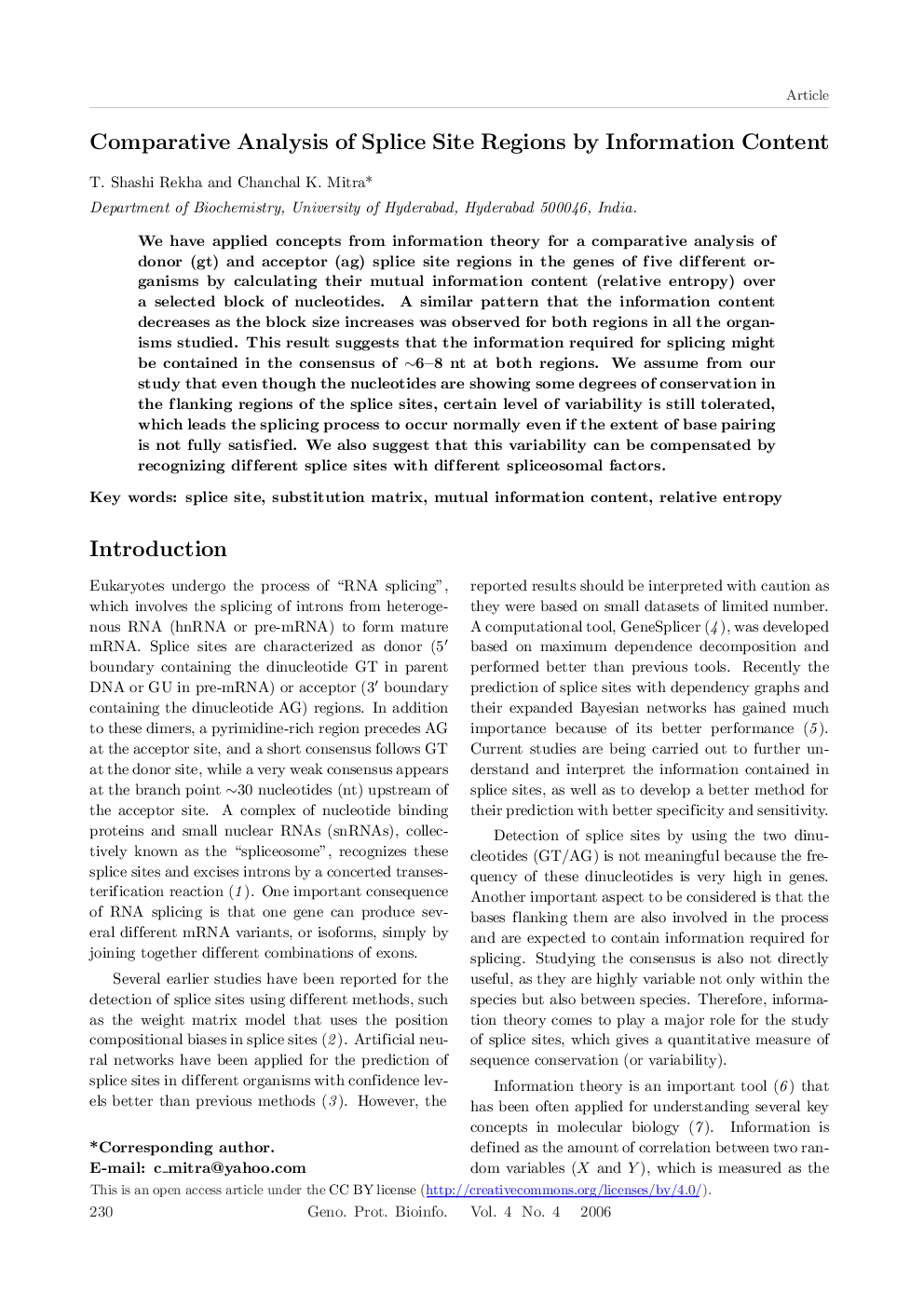| Article ID | Journal | Published Year | Pages | File Type |
|---|---|---|---|---|
| 2822840 | Genomics, Proteomics & Bioinformatics | 2006 | 8 Pages |
We have applied concepts from information theory for a comparative analysis of donor (gt) and acceptor (ag) splice site regions in the genes of five different organisms by calculating their mutual information content (relative entropy) over a selected block of nucleotides. A similar pattern that the information content decreases as the block size increases was observed for both regions in all the organisms studied. This result suggests that the information required for splicing might be contained in the consensus of ~6–8 nt at both regions. We assume from our study that even though the nucleotides are showing some degrees of conservation in the flanking regions of the splice sites, certain level of variability is still tolerated, which leads the splicing process to occur normally even if the extent of base pairing is not fully satisfied. We also suggest that this variability can be compensated by recognizing different splice sites with different spliceosomal factors.
